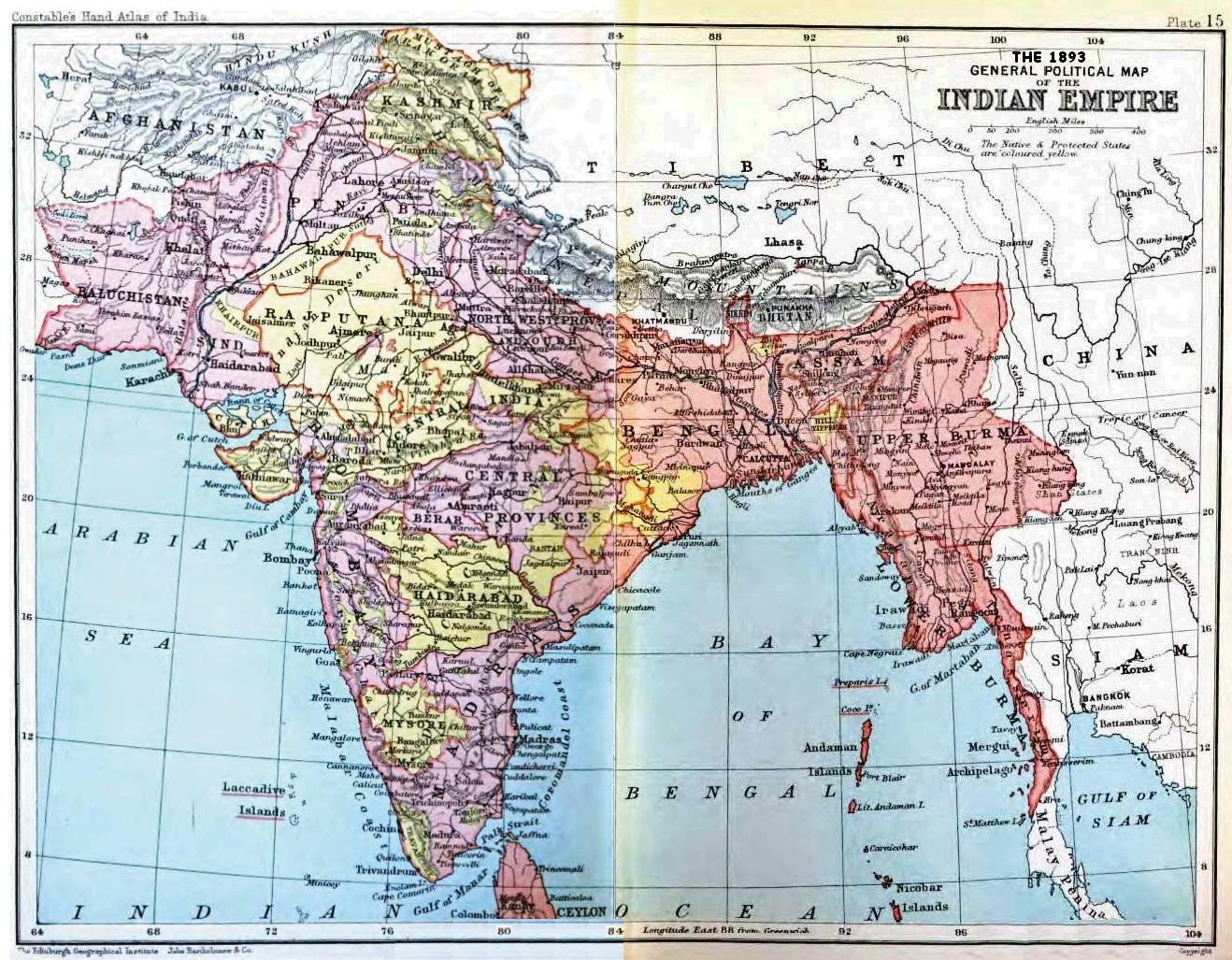
Princely state
A princely state (also called native state or Indian state) was a nominally sovereign[1] entity of the British Indian Empire that was not directly governed by the British, but rather by an Indian ruler under a form of indirect rule,[2] subject to a subsidiary alliance and the suzerainty or paramountcy of the British crown.
This article is about the British-Indian usage. For the global concept, see Principality.
At the time of the British withdrawal, 565 princely states were officially recognized in the Indian subcontinent,[3] apart from thousands of zamindari estates and jagirs. In 1947, princely states covered 40% of the area of pre-independence India and constituted 23% of its population.[4] The most important states had their own British political residencies: Hyderabad of the Nizams, Mysore and Travancore in the South, Jammu and Kashmir, and Indore in Central India. The most prominent among those – roughly a quarter of the total – had the status of a salute state, one whose ruler was entitled to a set number of gun salutes on ceremonial occasions.
The princely states varied greatly in status, size, and wealth; the premier 21-gun salute states of Hyderabad and Jammu and Kashmir were each over 200,000 km2 (77,000 sq mi) in size. In 1941, Hyderabad had a population of over 16 million, while Jammu and Kashmir had a population of slightly over 4 million. At the other end of the scale, the non-salute principality of Lawa covered an area of 49 km2 (19 sq mi), with a population of just below 3,000. Some two hundred of the lesser states even had an area of less than 25 km2 (10 sq mi).[5][6]